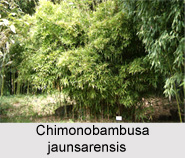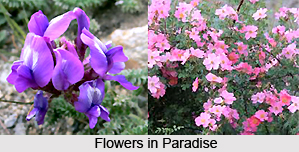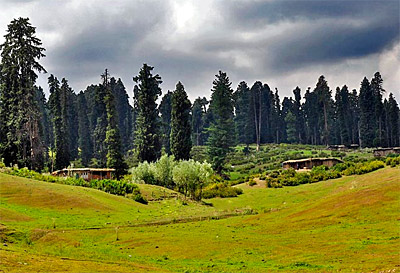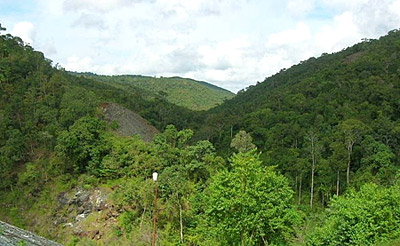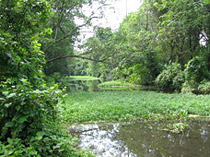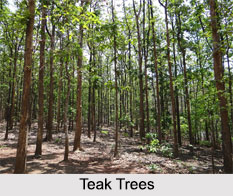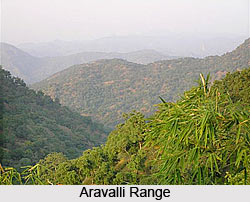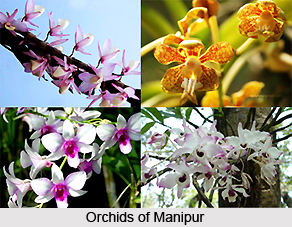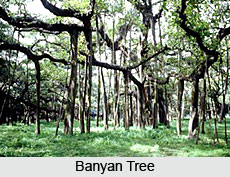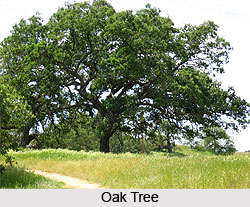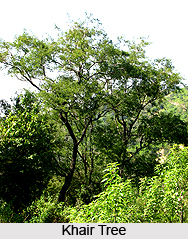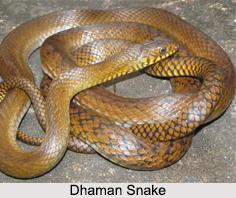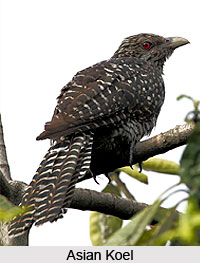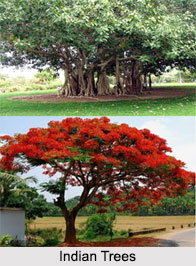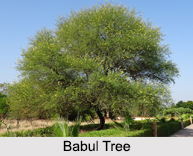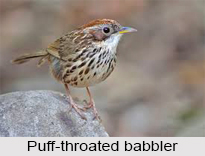 Puff-Throated Babbler or Spotted Babbler is an Indian bird that bears a scientific name of "Pellorneum ruficeps" is a species of passerine bird found in Asia.
Puff-Throated Babbler or Spotted Babbler is an Indian bird that bears a scientific name of "Pellorneum ruficeps" is a species of passerine bird found in Asia.
Habitat of Puff-Throated Babbler
Puff-Throated Babblers are found in scrub and moist forest mainly in hilly regions. They forage in small groups on the forest floor, turning around leaf litter to find their prey and usually staying low in the undergrowth where they can be hard to spot.
Call of Puff-Throated Babbler
Puff-Throated Babblers however have loud and distinct calls, including a morning song, contact and alarm calls. It is the type species of the genus Pellorneum which may however currently include multiple lineages.
Structure of Puff-Throated Babbler
Puff-Throated Babblers are brown above, and white below with heavily brown streaks towards the breast and belly. They have a chestnut crown, long buff supercilium and dusky cheeks. The throat is white, and is sometimes puffed out giving it the English name. Puff-Throated Babblers have strong legs, and spend a lot of time on the forest floor. They can often be seen creeping through undergrowth in search of their insect food, looking at first glance like a song thrush. Some subspecies have streaks on the mantle while others, especially in Peninsular India, are unstreaked.
Population of Puff-Throated Babbler
The widespread distribution of Puff-Throated Babbler has led to nearly thirty subspecies being described. The nominate population is found in peninsular India (excluding the Western Ghats Mountain Range in India). The population in the northern Eastern Ghats Mountain Range in India is paler and has been called as pallidum while a well marked dark form occurs in the southern Western Ghats Mountain Range in India which has been named granti (includes olivaceum). The western Himalayan Mountain Range population is punctatum (includes jonesi) and in the east is mandellii which has streaking on the back and nape apart from having call differences. In the east of India, south of the Brahmaputra River occurs chamelum while ripley is found in a small region in eastern Assam (Margherita). Further east in Manipur is vocale and pectorale in Arunachal Pradesh and northern Burma with stageri further south, followed by hilarum, victoriae and minus. Further east are found shanense, subochraceum, insularum, indistinctum, chtonium, elbeli, acrum, oreum, dusiti, vividum, ubonense, euroum, deignani, dilloni and smithi. Several others have been described and many populations are difficult to assign to subspecies.
Forage of Puff-Throated Babbler
Puff-Throated Babbler is a common resident breeder in the Himalayan Mountain Range and the forests of Asia. Like most babblers, it is not migratory, and has short rounded wings and a weak flight. Its habitat is scrub and bamboo thickets and forages by turning over leaves to find insects.
